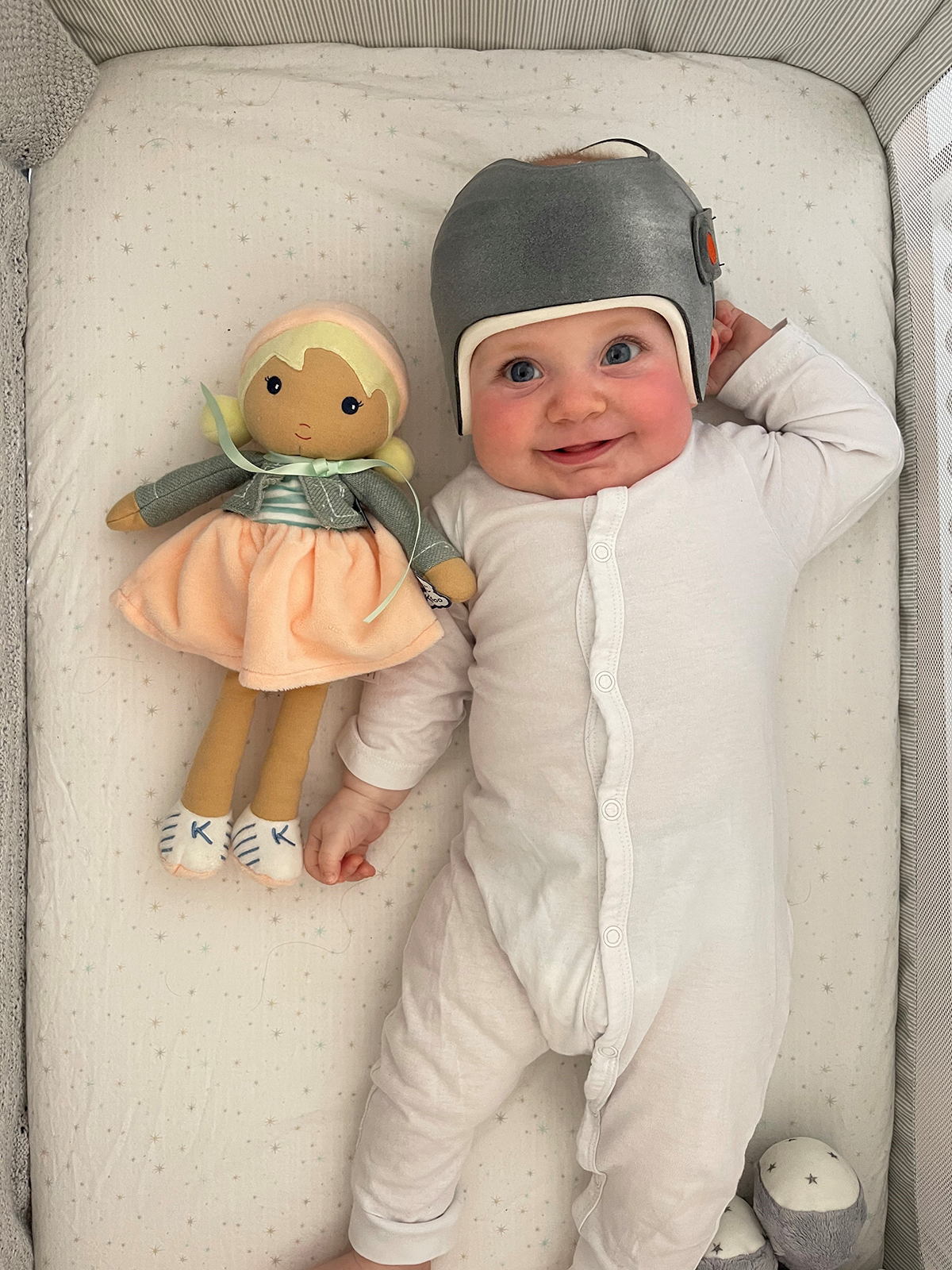
29 November 2021
We first met little Matisse in April 2021, when she was four and a half months old. Mum, Louise, initially noticed that Matisse was developing a flat head during her infancy. “I recognised the signs because my son had a similar issue at the same age,” she tells us. “In his case, it resolved itself as his sleeping patterns changed. In Matisse’s case, though, by the time she was four months old the flatness was getting worse. We were especially concerned that it was starting to affect her facial features. Her forehead was staring to bulge on one side and her eye was also starting to be affected. We felt that, if we didn’t take steps to address it, the issue would simply get worse.”
In some cases, positional plagiocephaly can indeed resolve itself through repositioning and tummy time. However, in the case of many babies this does not happen – and it is important to seek plagiocephaly treatment as early as possible before the plates of the skull harden.
In Louise’s case, an unexpected coincidence led her to LOC. “I was chatting to a friend about the situation, and she suggested that perhaps craniosacral therapy might help. Sadly, I was disappointed with the experience. But, by chance, my mum took my son out whilst we were seeing the therapist. She bumped into a lady whose baby was wearing a LOCband helmet. On approaching her, it emerged that LOC had provided the helmet, and so my mum took the details. The very next day, I filled out the online photo diagnosis form. I was offered a video appointment with Saeed (Saeed Hamid, LOC Director and Senior Orthotist) who confirmed plagiocephaly. We got an appointment at the Kingston clinic just days later. It was really fast!”
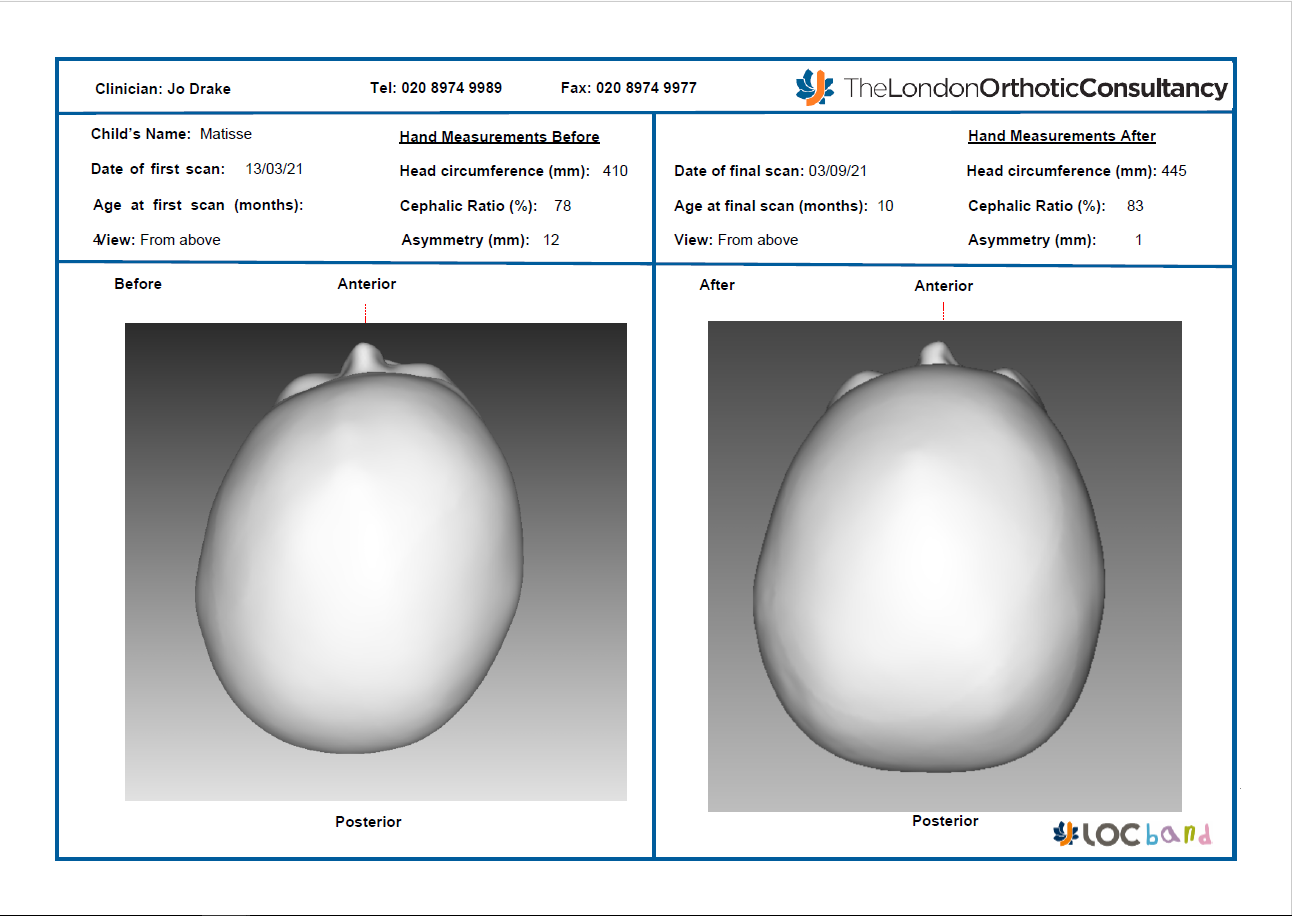
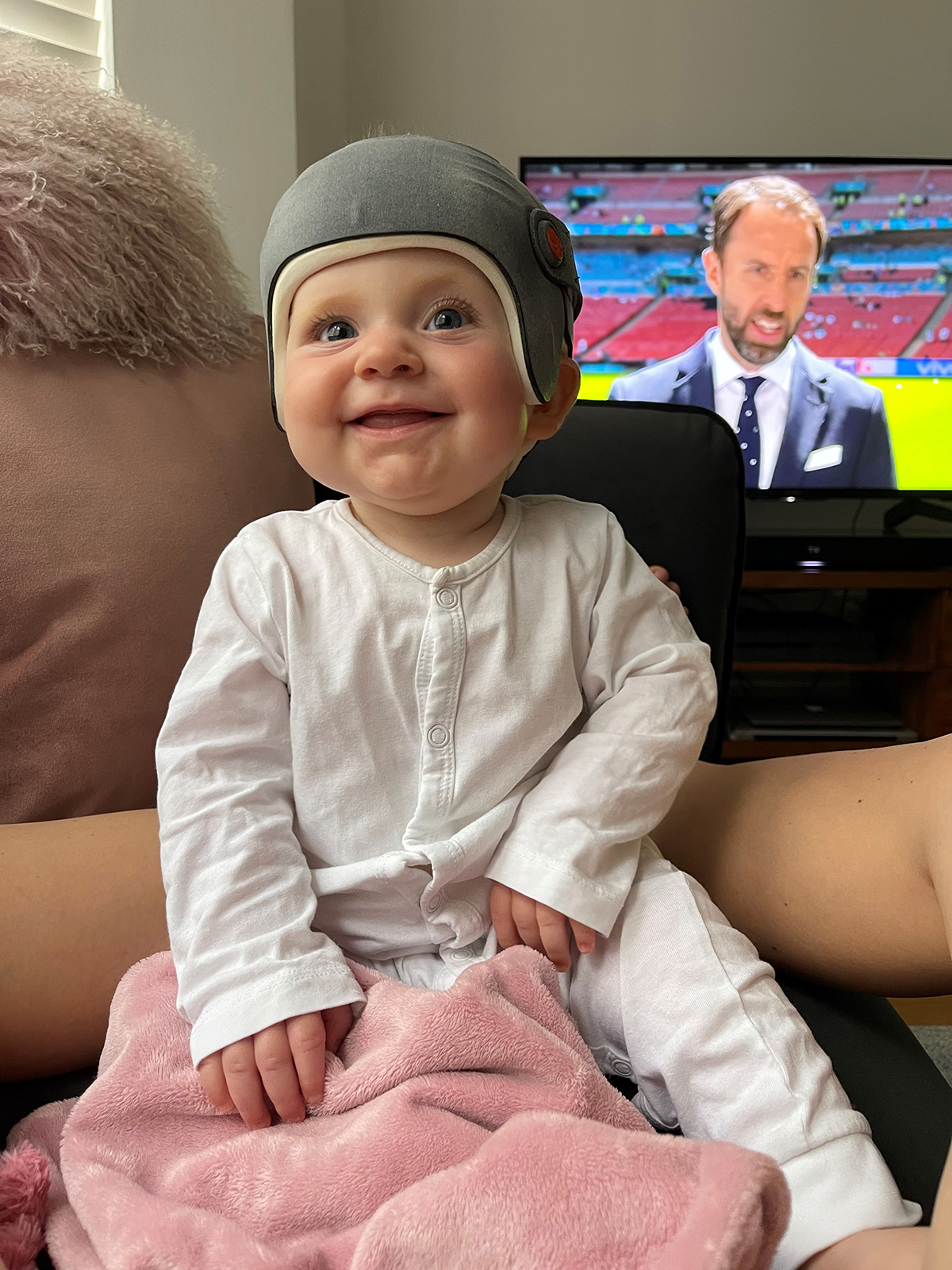
Matisse happy with Southgate's performance
In clinic, Matisse was seen by Jo (Jo Drake, Senior Orthotist), who explained that Matisse had a plagiocephaly with an asymmetry of twelve millimetres. She introduced Louise to both the traditional LOCband and the LOCband Lite – LOC’s next generation lightweight, breathable helmet for treating plagiocephaly and brachycephaly. “There was no pressure at all from Jo,” Louise recalls. “She simply explained the options and invited us to think about what we wanted to do. We felt sure straight away. Growing up today is hard enough as it is, and we wanted to fix this issue whilst we had the chance. I think of it along the same lines as providing your child with orthodontic treatment. If you can afford it, and it will help them to feel confident in later life, then why wouldn’t you?”
Matisse began wearing her LOCband Lite aged four and half months. Jo supported the transition by giving Louise a clear five-day plan for integrating the helmet. “We started with just one hour on and one hour off and progressed from there. We struggled a little for the first few nights, but by around day five she was happily wearing it and sleeping in it full time. We didn’t encounter any issues with rubbing or red marks. Jo is such a perfectionist; she went to huge efforts to make sure the LOCband Lite was as well-fitting and comfortable as possible. She made sure we knew that we could always contact her if we had any issues. We did not, but it was reassuring to know that she was there if we needed her. I cannot praise her highly enough.”
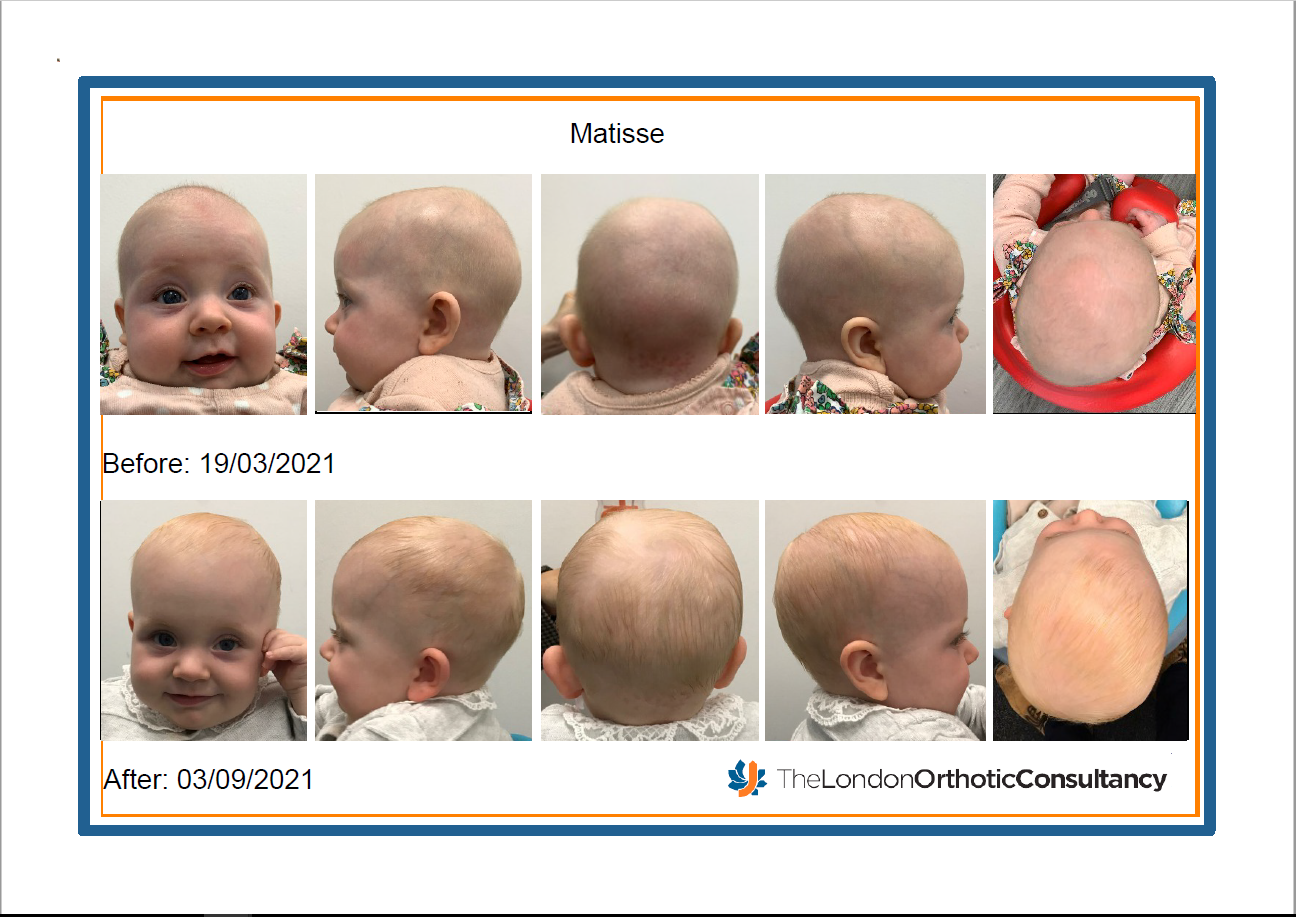
Before and After images
It was in mid-August 2021 that Matisse finished her LOCband Lite treatment. Louise attended a review at LOC with Jo’s fellow orthotist, Connor Mumford. “At that point, Matisse’s asymmetry had reduced from twelve millimetres to just three. We were already thrilled with that result. When we saw Connor, we had a holiday in Morocco booked ten days later. On Connor’s advice, I decided to keep the helmet on until we went. When we arrived in Morocco, we were in forty-degree heat from day one! So, we decided to remove the LOCband Lite, safe in the knowledge that LOC were happy with Matisse’s progress. When we had a follow-up review on returning to the UK, I was staggered that her asymmetry had reduced even further, in those last ten days of wearing the helmet, to just one millimetre!”
Having been through the plagiocephaly helmet treatment journey as a parent, Louise confirms that she would recommend LOC to other parents in a similar situation. “I would say, without hesitation, just go for it. In fact, I have already recommended LOC to a couple of people. It’s important to remember with plagiocephaly treatment that time is of the essence because it is most effective when the baby’s skull is still soft. We came to LOC comparably late. They gave us an appointment so quickly and manufactured the LOCband Lite within just two weeks. Being able to start without delay was brilliant. It is, without doubt, the best money we have ever spent, and we are delighted with the results.”
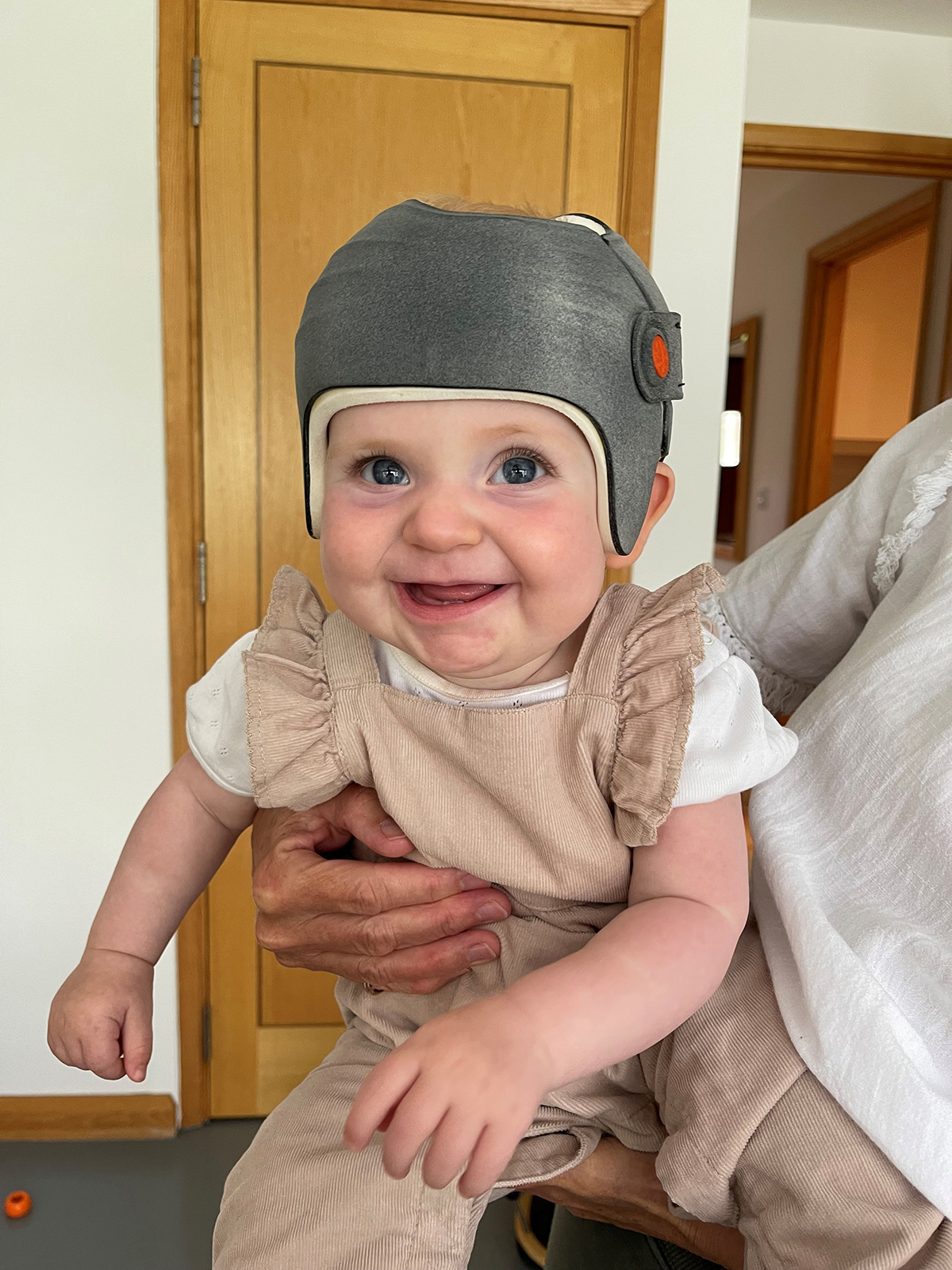
If you are worried that your baby’s head shape appears flat, we can help. You can use our free photo diagnosis form for a fast, confidential opinion from one of our orthotists. We can then offer you an appointment at one of our five clinic locations across the UK. To find out more or book an assessment, just contact the LOC team.
There are also charities that can assist with fundraising to meet the costs of a LOCband or LOCband Lite plagiocephaly helmet, including HeadStart 4 Babies and Just4Children. To find out more, visit our plagiocephaly treatment costs page.
This is very much dependent on how fast your baby is growing. The faster the growth, the more frequently your baby will be seen so that the helmet can be adjusted. In general, reviews will happen at two to four-week intervals.
The price of treatment covers:
Yes - All babies that have completed their course of treatment with us have achieved a measurable improvement in head shape. However, you don’t have to take our word for it.
Recent independent research conducted by a University Hospital in Germany has endorsed the treatment for babies with moderate or severe plagiocephaly.
A larger, retrospective study has just been published that found complete correction was achieved in 94.4% of babies treated with helmet therapy.
The results were conclusive: repositioning achieved acceptable correction in 77.1% of cases, but 15.8% were moved onto helmet therapy because re-positioning was not working. Meanwhile, 94.4% of the infants who started in the helmet-treated group achieved full correction, as did 96.1% of those who were transferred from the repositioning group into the helmet-treated group.
Further information can be found on our Plagiocephaly Research page.
If your baby has a temperature or a fever due to illness you must remove the band. The band can be put back on once the temperature has returned to normal.
The optimum age for treatment is between four and seven months.
This is because the skull is most malleable at this age and improvements to head shape tend to take less time and are more dramatic. That is not to say that helmet therapy should be ruled out if the baby is older than seven months. Routinely, babies up to the age of 16 months can be treated very successfully.
The cut off age is around 18 months when the fontanelles (soft spots on the head) are no longer malleable. As babies grow and develop at different rates, it is always worth checking if you are not sure. There have been cases where a baby’s fontanelles have not fused yet by the age of 18 months, who have achieved successful, but less-marked results with cranial remoulding therapy.
Torticollis is a condition in which a tight or shortened muscle in one side of the neck causes the head to tilt or turn to one side, resulting in the infant resting its head in the same position. In 2013, we analysed the data from all first appointments in our Kingston clinic and found that 20% of the babies examined had some kind of neck condition that was causing head immobility.
The clinics and clinicians that provide this treatment in the UK will have received similar training and experience. However, we are the only clinic that manufactures its own helmet and our clinicians are closely involved with the process for each individual helmet that we produce.
In addition, we do not restrict review appointments to a set number, we are extremely flexible and respond to individual parents' needs so that the best outcome can be achieved for each baby.
The LOCband is non-invasive and works by applying gentle, constant pressure over the areas of the baby’s skull that are most prominent while allowing unrestricted growth over the flattened areas. The band consists of a soft foam layer inside a thermoplastic shell. As the baby grows, the band will be adjusted frequently to gently guide the skull into a more symmetrical shape.